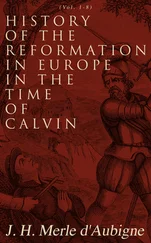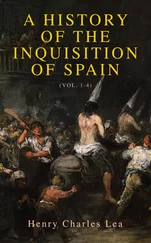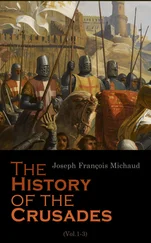Heinrich Graetz - History of the Jews, Vol. 1 (of 6)
Здесь есть возможность читать онлайн «Heinrich Graetz - History of the Jews, Vol. 1 (of 6)» — ознакомительный отрывок электронной книги совершенно бесплатно, а после прочтения отрывка купить полную версию. В некоторых случаях можно слушать аудио, скачать через торрент в формате fb2 и присутствует краткое содержание. Жанр: История, foreign_antique, foreign_prose, на английском языке. Описание произведения, (предисловие) а так же отзывы посетителей доступны на портале библиотеки ЛибКат.
- Название:History of the Jews, Vol. 1 (of 6)
- Автор:
- Жанр:
- Год:неизвестен
- ISBN:нет данных
- Рейтинг книги:3 / 5. Голосов: 1
-
Избранное:Добавить в избранное
- Отзывы:
-
Ваша оценка:
- 60
- 1
- 2
- 3
- 4
- 5
History of the Jews, Vol. 1 (of 6): краткое содержание, описание и аннотация
Предлагаем к чтению аннотацию, описание, краткое содержание или предисловие (зависит от того, что написал сам автор книги «History of the Jews, Vol. 1 (of 6)»). Если вы не нашли необходимую информацию о книге — напишите в комментариях, мы постараемся отыскать её.
History of the Jews, Vol. 1 (of 6) — читать онлайн ознакомительный отрывок
Ниже представлен текст книги, разбитый по страницам. Система сохранения места последней прочитанной страницы, позволяет с удобством читать онлайн бесплатно книгу «History of the Jews, Vol. 1 (of 6)», без необходимости каждый раз заново искать на чём Вы остановились. Поставьте закладку, и сможете в любой момент перейти на страницу, на которой закончили чтение.
Интервал:
Закладка:
The work accomplished at Sinai by an instantaneous act remained applicable to all times by asserting the supremacy of ethical life and the dignity of man. This promulgation of the Law marked the natal hour of the "distinct people," like unto which none had ever existed. The sublime and eternal laws of Sinai – coming from a Deity whom the senses cannot perceive, from a Redeemer who releases the enthralled and the oppressed – were revealed truths treating of filial duty, of spotless chastity, of the inviolable safety of human life and property, of social integrity, and of the purity of sentiment.
The Israelites had been led to Mount Sinai as trembling bondmen; now they came back to their tents as God's people of priests, as a righteous nation ( Jeshurun ). By practically showing that the Ten Commandments are applicable to all the concerns of life, the Israelites were constituted the teachers of the human race, and through them all the families of the earth were to be blessed. None of the others could then have surmised that even for its own well-being an isolated and insignificantly small nation had been charged with the arduous task of the preceptive office.
The Sinaitic teachings were not of an ephemeral nature, even in regard to their form. Being engraven on tables of stone, they could be easily remembered by successive generations. During a long period these inscribed slabs remained in the custody of the Israelites, and were called "the Tables of the Testimony," or "the Tables of the Law." Being placed in an ark, which became a rallying centre, round which Moses used to assemble the elders of the families, these tables served as a sign of the Sinaitic Covenant. They formed a link between God and the people who had formerly been trodden under foot, and who were now bidden to own no other Lord save the One from whom the Law had gone forth. It was for this reason that the ark, as the repository of the tables, was designated "the Ark of the Covenant." The ethical truths of Sinai became henceforth the basis for a new system of morality, and for the national constitution of the Israelites. These truths were further developed in special laws which had a practical bearing upon the public and private affairs of the people. Slave-holders and slaves were no longer to be found amongst the Israelites. The selling of Israelites as slaves, and perpetual servitude of an Israelite became unlawful. A man who forfeited his liberty was liable to be held in service during six years, but in the seventh year he regained his freedom. Wilful murder and disrespect to parents were punishable with death. The sanctuary could give no protection to criminals condemned to die. The murder of a non-Israelitish slave involved condign punishment. A gentile slave ill-treated by his master recovered his liberty. A man committing an offence on the virtue of a maiden was bound to make her his wife, and to pay a fine to the father of the injured woman. Equitable and humane treatment of the widow and the orphan was enforced; a similar provision was ordained for the benefit of strangers who had joined one of the tribes. The Israelites, in fact, were bidden remember their former sojourn in a foreign land, and to refrain from inflicting upon strangers the inhuman treatment which they themselves had formerly endured.
This spirit of equity and brotherly love, pervading the ancient code of laws, could not at once change the habits of the people. The duties involved in these laws were too spiritual and too elevated to have such an effect. Moses having temporarily absented himself to make preparations for the reception of the Sinaitic law, the dull-witted portion of the people imagined that their God was abandoning them in the desert, and they clamoured for the rule of a visible Godhead. Aaron, who had taken the lead in the absence of Moses, timorously yielded to this impetuous demand, and countenanced the production of a golden idol. This image of Apis or Mnevis received divine homage from the senseless multitude who danced around it. Moses, on descending from Mount Sinai, ordered the Levites to put to death some thousands of the people. Nothing but the exercise of extreme rigour could have repressed this worship of idols.
With the object of protecting the people from a relapse into idolatry, and of supporting them during their state of transition from barbarism, they were allowed to form a conception of the Deity – though not by means of an image – through some material aid which would appeal to the senses. On Sinai they had beheld flashes of lightning with flames of fire, and from the midst of a burning cloud they had heard the Ten Commandments. An emblem of this phenomenon was now introduced to remind the people of the presence of the Deity as revealed at Sinai. It was ordained that a perpetual fire should be kept alight on a portable altar, and be carried before the tribes during their migrations. Not the Deity Himself, but the revelation of the Deity at Sinai, should thereby be made perceptible to the sense of vision. The performance of sacrificial rites was a further concession to the crude perceptions of the people.
The spiritual religion promulgated at Sinai did not intend sacrifices as the expression of divine adoration, but was meant to inculcate a moral and holy life; the people, however, had not yet risen to this conception, and could only be advanced by means of education and culture. The other ancient nations having found in sacrifices the means of propitiating their deities, the Israelites were permitted to retain the same mode of divine service; but its form was simplified. The altar became an integral part of the sanctuary, in which no image was tolerated. The only objects contained therein were a candelabrum, a table with twelve loaves, symbolising the twelve tribes; and there was also a recess for the Ark of the Covenant. Altar, sanctuary and sacrificial rites required a priesthood. This primæval institution, too, was retained. The Levites, as the most devoted and best informed tribe, were charged with sacerdotal functions, as during the sojourn in Egypt. The priests of Israel, unlike those of the Egyptians, were precluded from holding landed property, as such possessions might have tempted them to misuse their prerogatives and neglect their sacred duties. For this reason it was prescribed that their subsistence should be derived from the offerings made by the people. Collaterally there existed a custom, dating from remote patriarchal ages, which demanded that the first-born son of every family should attend to the performance of sacrificial rites. This prerogative could not be abruptly abolished, and continued for some time alongside of the Levitical priesthood, though both of them stood in the way of the pure Sinaitic teachings. The materialism of the age demanded indulgent concessions, combined with provisions tending to the refinement of popular habits. Only through the aid of the spiritually gifted could the understanding of the subordinate nature of sacrifices be preserved in the consciousness of the people.
During the forty years of their wandering in the desert, the Israelites sought pastures for their flocks within the mountain region and its neighborhood.
During these migrations Moses instructed the people. The older generation gradually passed away. Their descendants, obedient to the teachings of the lawgiver and his disciples, formed a docile, pious, and valiant community, and became proficient in the knowledge of their laws.
Moses now surrounded himself with councillors, who were the chiefs of seventy families. This system became a model for later forms of administration. The Council of Elders participated in important deliberations, and assisted in the management of public business. On the advice of Jethro, his father-in-law, Moses appointed inferior and higher judges, who respectively had under their jurisdiction ten, a hundred, and a thousand families. The people had the right of electing their own judges, whose appointment they then recommended to Moses. These judges were charged to maintain strict impartiality in cases of litigation between members of the tribes of Israel, or between Israelites and strangers. Nor was it within the discretion of the judges to make distinctions between persons of high and low degree. They were also commanded to keep their hands clean from bribes, and to give their verdicts according to the principles of equity, "for justice belongs unto God," and has its source in God himself. Brotherly love, community of interests, equality before the law, equity and mercy were the high ideals which he held before the generations which he had trained. The inculcation of these laws and teachings marked an eventful era in the nation's history. As such it was characterised by the prophets, who called it "the bridal time of the daughter of Israel," and the season of "her espousals, when she went after her God in the land which was not sown." Israel's wanderings had nearly come to a conclusion and the younger generation was well fitted for the attainment of the object of its settlement. A further sojourn in the desert would have inured the people to habits of restlessness, and might have reduced them for ever to the nomadic condition of the Midianites and the Amalekites. They appear to have made an unsuccessful raid in a northern direction, along the old caravan roads. In a second defeat some of them were captured by their enemies. But this discomfiture was apparently avenged by combatants belonging to the tribe of Judah, who were aided by men of the tribe of Simeon, and by Kenites, with whose assistance they seized several cities.
Читать дальшеИнтервал:
Закладка:
Похожие книги на «History of the Jews, Vol. 1 (of 6)»
Представляем Вашему вниманию похожие книги на «History of the Jews, Vol. 1 (of 6)» списком для выбора. Мы отобрали схожую по названию и смыслу литературу в надежде предоставить читателям больше вариантов отыскать новые, интересные, ещё непрочитанные произведения.
Обсуждение, отзывы о книге «History of the Jews, Vol. 1 (of 6)» и просто собственные мнения читателей. Оставьте ваши комментарии, напишите, что Вы думаете о произведении, его смысле или главных героях. Укажите что конкретно понравилось, а что нет, и почему Вы так считаете.












